|
Opinions Trends and influences shaping resort design in 2018 22 NOVEMBER 2017 8:25 AM Resort design in the coming year will be influenced by trends in wellness, as well as the tendency to step away from brand standards and develop storylines for properties. By Muriel Muirden In this article, we consider some of the demographic and lifestyle influences helping to shape the destination resort experience of tomorrow. A recent study by the Boston Consulting Group identified that 55% of all luxury spending worldwide is now “experiential”—a strong movement away from status symbol consumption to spending on entertainment, travel and unique adventures. There is an underlying assumption that this trend is driven by non-material, adventure-focussed millennials, but that might not fully be the case. Boomers have already bought their stuff and now lust for travel experiences. There is also greater awareness, as they age, on the need to focus on activities that have links to their health and well- being. Studies show that in Western Europe, people over the age of 60 will account for 59% of consumption between now and 2030. Adventure travel has become a booming business opportunity with people over the age of 50, according to The Economist. In America, more than 40% of adventure travellers are 50 or older. Instead of comfortable cruises, they demand action from Arctic expeditions to cycling tours of the Andes mountains. It is clearly not only millennials who are seeking out those unique Instagrammable moments. Our prediction for 2018 is in an increase in packaging and marketing experiential vacations for the “Peter Pan Boomer generation.” We see the end of stereotyping retirement as a |
dialing down; rather it should be seen as a time to step out of your comfort zone and go high- octane.
A walk in the woods
Increasing stress in the work place is now widely seen as driving all manner of ailments from fatigue to depression. There is awareness that the body, mind and spirit require nourishment through exercise, healthy diet and holistic pursuits such as yoga, meditation, Pilates, wellness therapies and treatments.
Hotels are responding through the creation of specific healthy-living programs, enhanced fitness facilities and even new brands that promote wellness throughout the hotel experience.
However, “the tonic of the wilderness” is also seeing a strong revival with the growing trend towards “forest bathing,” the growing popularity of remote holistic retreats, the development of nature gyms and the increasing prevalence of biophilic and active design in the hospitality sector.
Forest bathing was an expression coined by the Japanese government in 1982. Over a decade, it commissioned studies which proved that a slow walk in the woods had a positive impact on the overall well-being of people. The exposure to phytoncides—the airborne, aromatic oils emitted by trees—have a long-lasting impact on the body’s immune system, as well as a positive impact on blood pressure, heart rate and stress levels. Forest bathing is now a pillar of preventative medicine in Japan with a 25% participation rate across the population and millions of visits to the 55-plus official forest therapy trails. Momentum is now growing in Korea, Taiwan, Finland and the United States, as studies worldwide confirm the wide-ranging therapeutic benefits.
Accesible luxury?
2018 will inevitably see the debut of new hotel brands, but the segment to watch is the so-called “accessible luxury.” Innovation in this area has been high and the popularity of new concepts like Public in NYC and Pendry Hotels in San Diego and Baltimore, amongst others, has allowed them to perform strongly amongst their peers. In many markets, brands like 1 Hotels are giving the traditional luxury brands a run for their money.
Focussing on quality experiences, quirky design and local cultural touches (and not being tied to rigid brand standards), has allowed this sector to flourish. Adrian Zecha recently launched the Azerai brand in Laos—he has spoken eloquently about casualization of the luxury sector and the growth in market demand from an experience-hungry, aspirational, but not necessarily affluent market.
The sector is fun and eclectic and playing a role in shaking up both design and service approaches.
Immersive hotel and restaurant concept
Immersion will be one of the buzz words for 2018. Excitement is building as Disney develops the Star Wars-themed hotel in Orlando. Due to open in 2019, the hotel will offer a fully immersive, two-day experience. Designed and themed like a spaceship, each guest will get a costume and storyline at check-in, and staff will be in character throughout their stay.
Intellectual property is also increasingly playing a role within the immersive retail and dining space. You only have to look at the queues of costumed witches and wizards at dedicated Harry Potter-themed stores in Edinburgh and London to see the blurring of lines between retail and
roleplay.
Restaurant entrepreneurs are already combining art with culinary delights. The Vaults in London have hosted a series of theatrical feasts, including “Beauty and the Feast,” with a three-course theatrical culinary experience complete with eccentric performances. The National Theatre has joined with the property to offer theatregoers a curated three-course meal onstage as the drama evolves around them.
At London’s Ginger Line, diners can find themselves foraging for their dinner in an enchanted forest before boarding an aircraft for desert. In a world where waiters are trained actors and as much attention is paid to the set and storyline as to the multi-course menu, tickets are hard to come by. According to JWT Intelligence, multisensory dining experiences are on the rise, with 71% of millennials saying they love to attend food-focused events.
The entrepreneurial spirit is high, with ever more ambitious immersive venues—a trend to watch in 2018.
Muriel Muirden is executive vice president and managing director of strategy at architectural firm WATG, and specializing in pre- development strategic advice and support. She also advises the firm’s global leaders on tourism trends and market opportunities, and conducts proprietary research on evolving hospitality products and market dynamics. She has 25 years of experience in the tourism and leisure industries through operational, development and consultancy roles. Her particular areas of expertise are in the fields of development strategy, concept evaluation and business planning for major tourism, hotel and resort real estate enterprises.
The opinions expressed in this column do not necessarily reflect the opinions of Hotel News Now or its parent company, STR and its affiliated companies. Bloggers published on this site are given the freedom to express views that may be controversial, but our goal is to provoke thought and constructive discussion within our reader community. Please feel free to comment or contact an editor with any questions or concerns.

